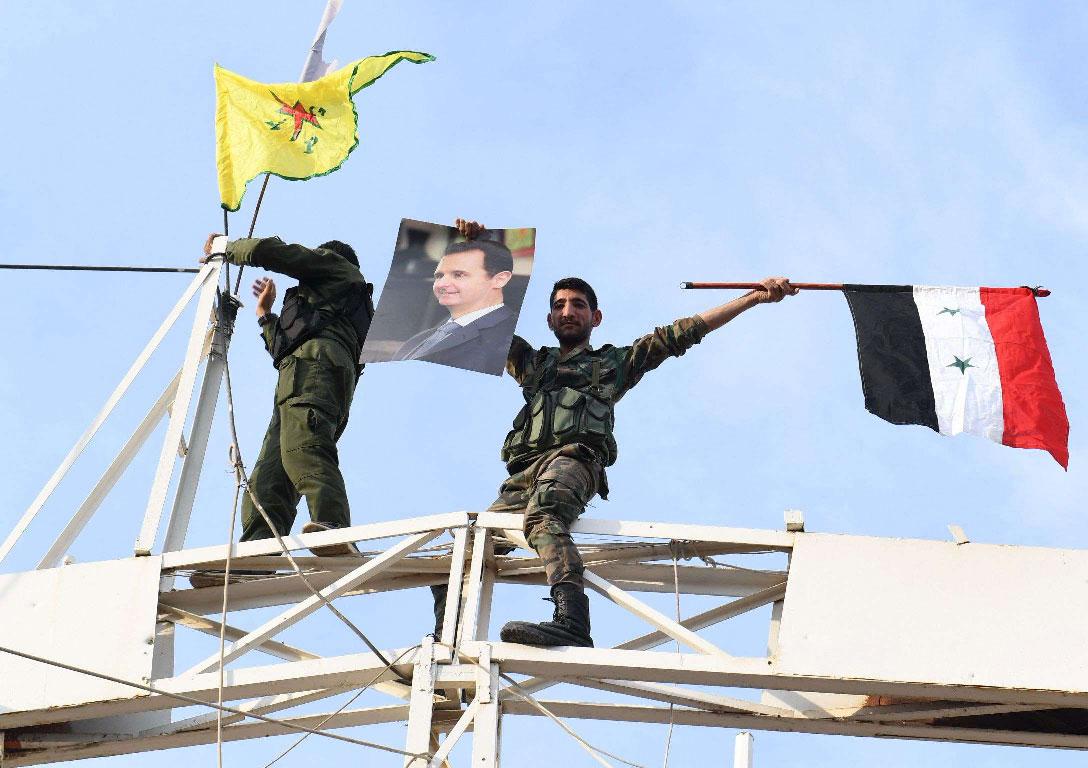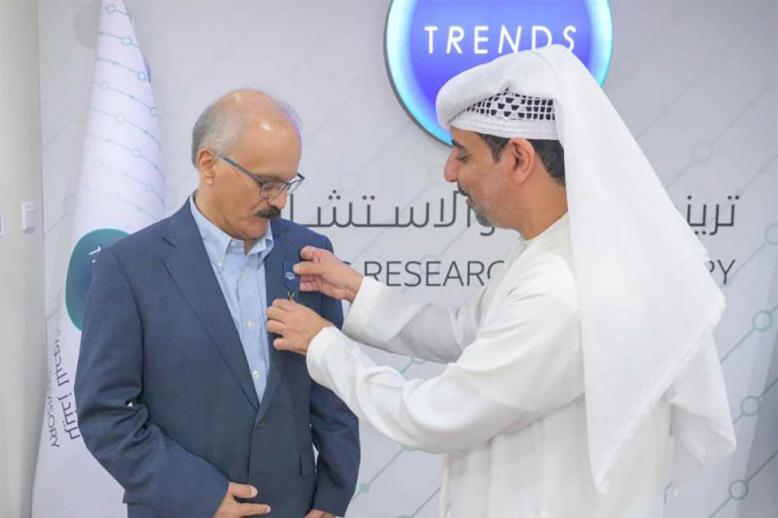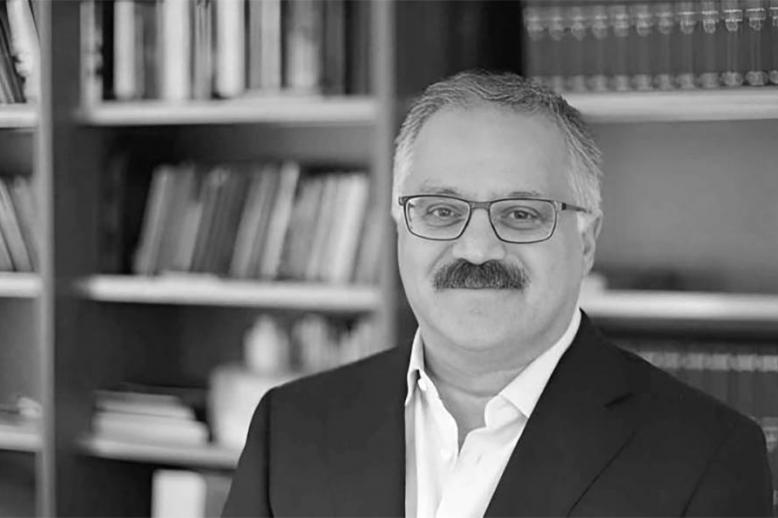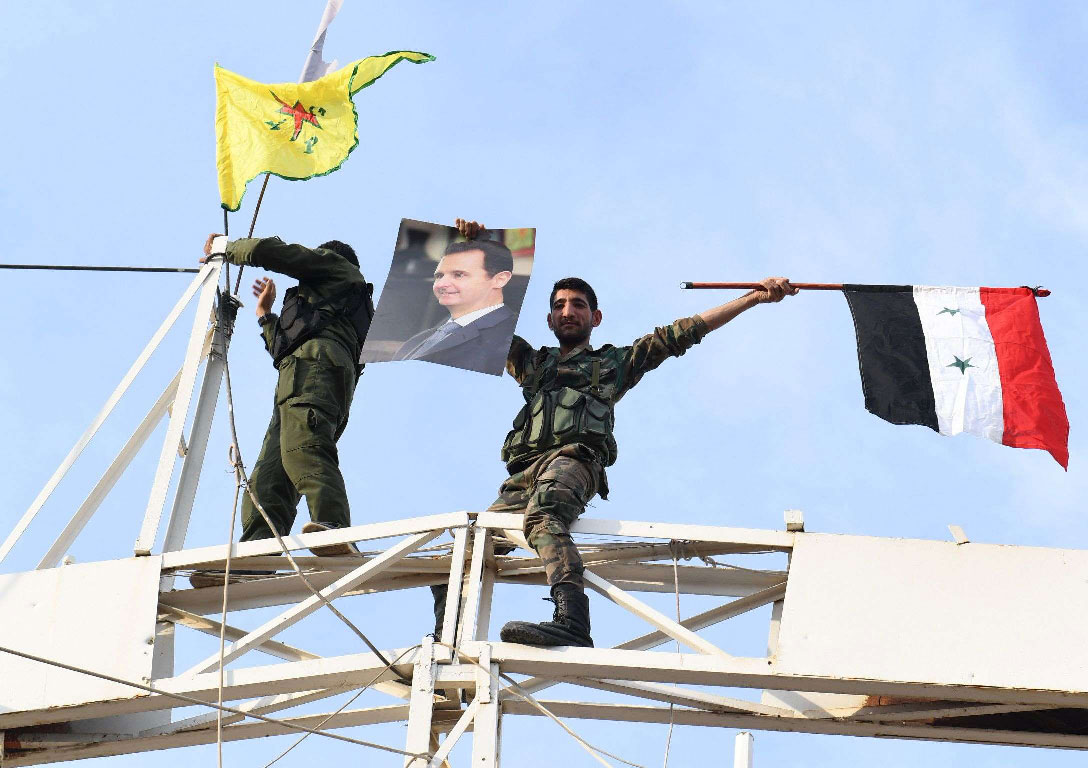In Syria, PKK mimics Assad’s propaganda and the West falls for it
Mustafa Bali, head of the press office for the Syrian Democratic Forces, the coalition partner against the Islamic State in Syria, sent a tweet showing Turkey’s Arab proxies engaged in “ISIS chants.”
By this, he meant the takbir “God is Great,” an expression used by Muslims every day. When criticised, Bali doubled down and blocked many critics. This was a microcosm of one of the darker threads in a Syrian Democratic Forces’ messaging strategy that is among the most effective propaganda campaigns.
It has been known that the Syrian Democratic Forces (SDF) is a legal fig leaf for the terrorist-designated Kurdistan Workers’ Party (PKK) and its Syrian defectors have spelled out the details.
Attaching Arab, Christian and other units to the PKK was intended to give the SDF a multiethnic veneer but political and military power has remained with PKK commanders who, in Syria, use other brands such as People’s Protection Units or Democratic Union Party.
The multiethnic marketing of the SDF is one example of the PKK’s messaging skills, switching between presenting the structure as majority-Arab and then as synonymous with “the Kurds,” depending on which was more advantageous. Western media complied without apparent hesitation over a narrative shift that abrupt and contradictory.
Taking a leaf out of the propaganda book of the regime of Syrian President Bashar Assad, the PKK has sought to present itself as friendly to the Christian minority.
The PKK’s ability to shape the Western media message has come about for a variety of reasons.
Earlier in the Syrian conflict, the PKK used the time-tested practice of authoritarian governments: bar or expel those who publish articles the regime finds disagreeable and others can be trusted to self-censor after that to retain access.
This was not a secret among journalists and analysts. In 2016, a journalist at a prominent outlet told me reporters were closely shadowed by PKK minders in SDF-controlled areas but the Raqqa offensive was pending and to write about the PKK “would have completely burned my access.” So the journalist and essentially all others systematically misrepresented the situation to conform with PKK demands.
Such distortions don’t seem to have struck anybody — neither reporters nor editors — as an ethical outrage. The Islamic State (ISIS) was the story, after all. The PKK had the further good fortune of journalists who would assist them in identifying critical reporters.
The reason for the PKK’s narrative control can be traced — as with so much else — to US President Donald Trump. He green-lighted Turkey’s anti-PKK incursion, so the left-leaning journalist corps will publish anything negative about it to reflect on Trump. The grim character of much of the Turkish proxy force and Turkey’s already battered image in the West aided the PKK’s messaging.
Of course, the Western governments’ need to sell their publics on the PKK played a huge role in shaping the coverage and the US Defence Department’s romantic attachment to its PKK partner has been a significant part of that. Any pro-PKK active measure disseminated to the US media will be “confirmed” by Pentagon officials and sent out to the public. The subsequent debunking is beside the point.
In assessing what it is about the PKK message that attracts Westerners, the democratic and liberal pretentious are obviously part of it. The idea of a besieged ethnic minority, an underdog, resonated — as did the feminist and environmental themes.
Perhaps above all it is the secularism but this message has a distinctly unpleasant underside to it, less about the freedom of religion and more about the PKK being not-really Muslims, or “Muslim-lite” as one analyst put it. And certainly not Arab.
“The PKK has a long tradition of using anti-Islamic sentiment to attract Western attention,” said Ruslan Trad, a journalist and co-founder of Bulgarian-based military journal De Re Militari, gaining the PKK notable “support among ultra-nationalists [and] far-leftists” but extending well beyond that.
The PKK’s anti-Islam messaging in the anti-ISIS war drew great sympathy in the West and the same model has been applied as the PKK clashes with Syrian rebel forces. Thus it is that the takbir and the symbol of tawheed (monotheism) — common things to all Muslims — can be presented to a Western public that doesn’t know any better as evidence that the PKK’s rebel opponents are extremists.
The worst example of the PKK’s willingness to lean on bigotry and conspiracy theories was its smear campaign against the White Helmets, an aid organisation that rescues victims of the Assad regime, which was set up by, among others, James Le Mesurier, who was found dead on November 11.
Unable to tolerate genuinely independent civil society actors, the PKK banned the White Helmets from areas it controls and spread disinformation that the White Helmets assisted rebel military operations and had ties to al-Qaeda. PKK messaging often matches that used by Assad and Russia.
In Syria’s complex war, Western publics wanted “good guys.” The belief that they have been found in the SDF was partly about portraying an idealistic image of what the SDF stood for. In equal measure, it was about appealing to baser instincts by stressing what the SDF was not.
Kyle Orton is a Middle East analyst.
This article was originally published in The Arab Weekly.






